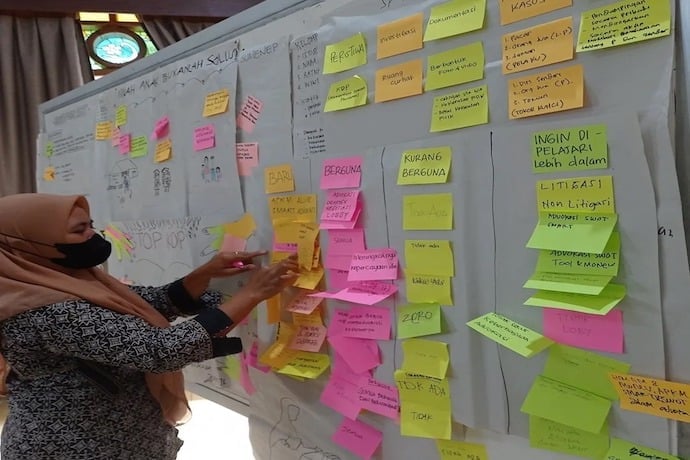I think we can all agree that the pandemic has really limited our ability to move around. Maybe you haven’t been able to visit your relatives, go to the movie, or watch a baseball game. One of the areas that were hit really hard by the movement restrictions has been people working in the field of peacebuilding.
Peacebuilding is about helping solve conflicts in countries all over the world. The main goal of people who work in this field is to help minimize conflict between groups of people. Peacebuilders do this by helping the conflicted groups talk about their problems with one another and teaching conflict resolutions skills. You can compare peacebuilders to teachers helping students solve a disagreement.
Traditionally, a lot of the work peacebuilders do has always been in person. In Indonesia, peacebuilders have to go to isolated villages to help with local conflicts. But because of the pandemic, peacebuilders can’t travel as often. This is a very serious problem, since the stress of the pandemic has reignited a lot of old conflicts, and the peacebuilders are needed more than ever.
Thankfully some peacebuilding organizations in Indonesia – like the Asian Muslim Action Network (AMAN) and the Wahid Foundation – adapted to these new conditions very quickly. Just like with a lot of schools, workplaces, and extracurriculars, these peacebuilders took their activities online.
Moving online had two main challenges. Firstly, many of the villages these peacebuilders worked with didn’t have good internet. Secondly, these peacebuilders had not used online platforms like Zoom very much before, so they were worried it wouldn’t be effective.
The way that AMAN and the Wahid Foundation addressed the first challenge was pretty smart. They helped set up community internet hubs in the villages. So even though a lot of houses in the village had no internet, people could visit these local hubs whenever they wanted to go online.
Through some trial and error, AMAN and the Wahid Foundation found a way to carry out their peacebuilding activities effectively online. Even better, a lot of villagers found using Zoom to be a great alternative to in-person activities for things like conflict resolution and mental health training. The villagers loved that it made the peacebuilding activities more accessible. Also, using Zoom brought some communities isolated from one another closer together.
So what can we learn from the experiences of AMAN and the Wahid Foundation when it comes to problem-solving? You might recall from last issue’s article, Lessons from Mars, breaking down a problem into its components is really important. We can see this in how these organizations identified the challenges of moving online.
Equally important, this example shows that when problem-solving you have to be willing to try new things. Platforms like Zoom were rarely used for peacebuilding activities before the pandemic. But because of the willingness to try something new, Zoom has become a normal, and important, part of the process.
Learn More
Definition of Peacebuilding
https://www.international-alert.org/what-we-do/what-is-peacebuilding
Asian Muslim Action Network
Wahid Foundation
Helping Middle-schoolers Understand Peacebuilding
https://www.middleweb.com/18931/help-students-understand-peacebuilding/
Peacebuilders program for Young Children
https://www.peacebuilders.com/media/pdfs/YoungChildPacketColor.pdf
What is Peacebuilding?
https://www.c-r.org/who-we-are/why-peacebuilding/what-peacebuilding
Empowering Children as Peacebuilders
https://www.wvi.org/peacebuilding-and-conflict-sensitivity/empowering-children-peacebuilders
Peacebuilding Toolkit for Educators
https://www.usip.org/sites/default/files/GPC_EducatorToolkit-%28MiddleSchool%29_combined.pdf

